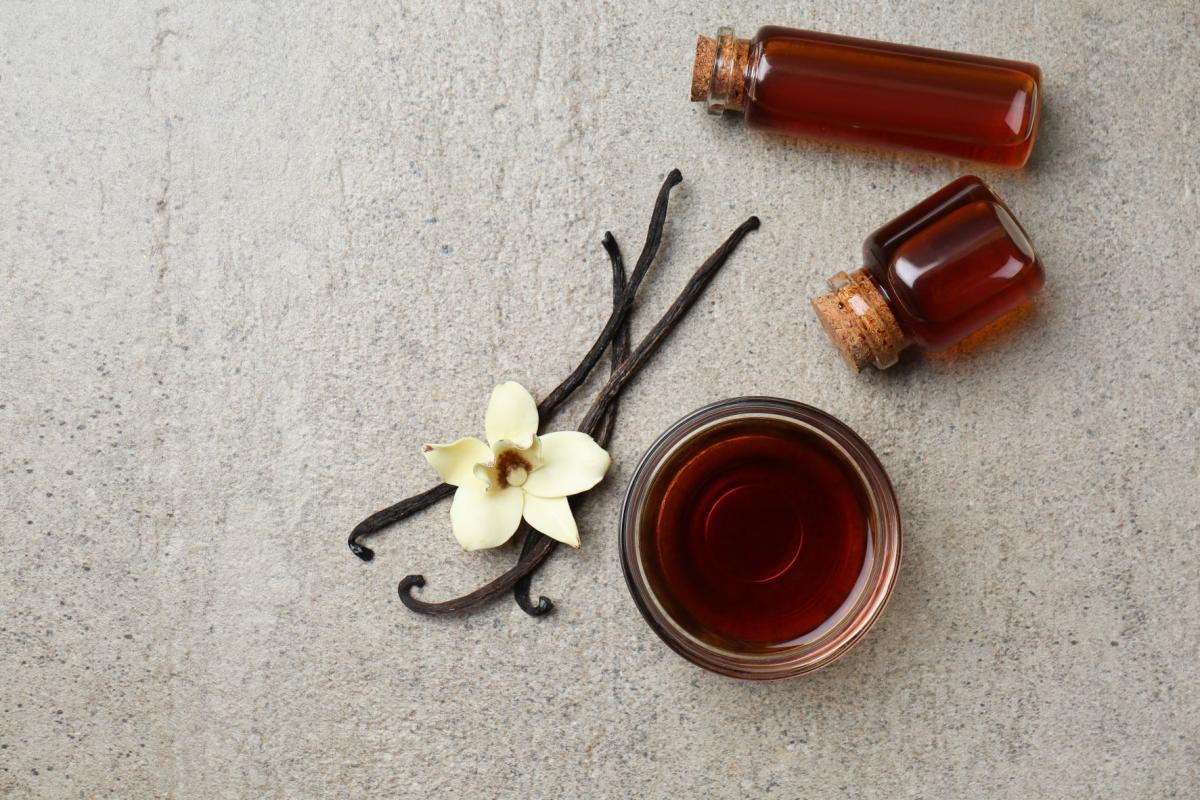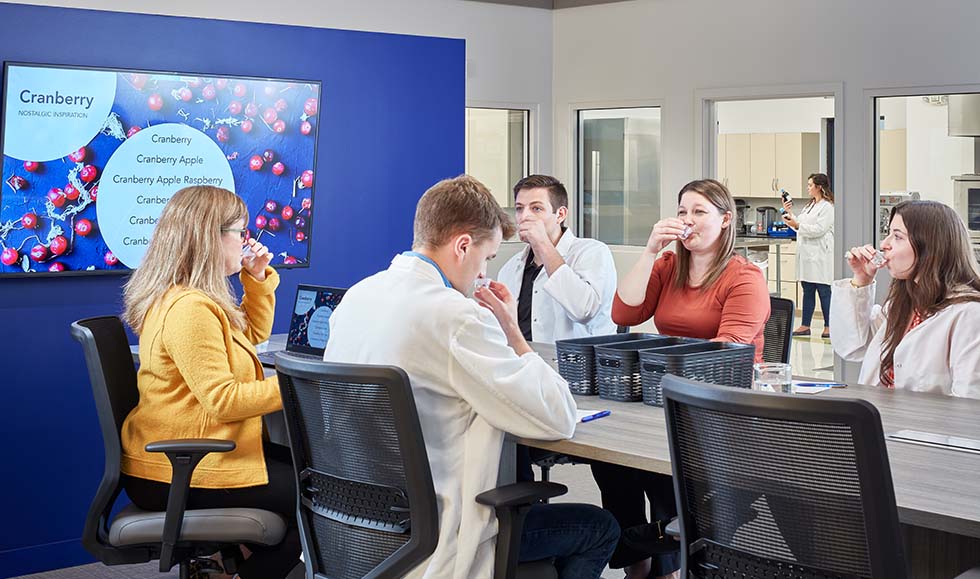The Story of Vanilla and How it Became the Most Prolific Flavor

Often unfairly described as simple or boring, vanilla is anything but plain. Not only is it considered to be the world’s favorite flavor because of its subtle yet intoxicatingly sweet, creamy and floral notes, but the process for producing vanilla is meticulous, unforgiving and exhilarating.
Vanilla begins with a single flower that opens for pollination only one day every year and if you miss it, no vanilla bean. Up until the mid-19th century, vanilla orchids were pollinated exclusively by a particular bee in Mexico called Melipona. As demand for vanilla rose, attempts were made to industrialize the process, but nothing proved successful.
Until an attempt to artificially pollinate vanilla orchids was done by a slave, Edmond Albius, who lived on the French Island of Bourbon (Réunion) in the Indian Ocean. When he discovered that vanilla orchids could be hand pollinated, it opened doors for vanilla production outside of Mexico that otherwise would not be possible.
A vanilla vine is very prolific: there are usually about a thousand blossoms per vine but only 40 to 50 blossoms are pollinated to not overtax the vine. Flowers must be hand-pollinated during a five– to six-hour window of blooming. Once pollinated, beans take about three to four months to mature.
Growing and harvesting vanilla is incredibly labor-intensive. Both the vine and beans are very delicate, so they require careful handpicking, in addition to the already labor-intensive hand-pollination process. Growing season is an eight-month process, running from November to June. Harvesting occurs during June and July, which leads into the eight- to 12-week traditional curing process. From July through September, vanilla is aged and prepped; sorted and graded; and packaged for export.
The Aztecs first named the fruit tlilxochitl or “black flower” because the pod shrivels and turns dark after it is picked. Beans are boiled to halt vegetative growth, beginning the flavor development process. During the curing process, beans are laid out to “sweat” in the hot tropical sun during the day and wrapped in burlap blankets during the evening.
The Malagasy government sets dates for when the new vanilla crop can begin trading, which is typically mid-July, and when the beans can be exported out of the country. Mid-October marks the start of the new crop of vanilla exports. This is done to discourage vanilla farmers from picking their beans too early. Allowing vanilla beans to mature on the vine for longer periods of time produces a higher quality of cured vanilla than those picked prematurely.
Madagascar Vanilla
 Madagascar is the No. 1 producer of the classic vanilla flavor most U.S. consumers know and love. Madagascan vanilla beans, also known as bourbon vanilla, have nothing to do with bourbon whiskey. Rather, these beans are grown on islands in the Indian Ocean formerly known as the Île Bourbon, which is made of islands we know as Madagascar, Comoros and Réunion today. Bourbon Vanilla beans produce a clear and creamy flavor, and are regarded as the most popular vanilla profile, making Madagascar the top producer of vanilla globally.
Madagascar is the No. 1 producer of the classic vanilla flavor most U.S. consumers know and love. Madagascan vanilla beans, also known as bourbon vanilla, have nothing to do with bourbon whiskey. Rather, these beans are grown on islands in the Indian Ocean formerly known as the Île Bourbon, which is made of islands we know as Madagascar, Comoros and Réunion today. Bourbon Vanilla beans produce a clear and creamy flavor, and are regarded as the most popular vanilla profile, making Madagascar the top producer of vanilla globally.
Synergy Flavors procures vanilla beans through sustainable sources that prioritize the well-being and livelihood of vanilla farmers and their families. We work only with suppliers that use traditional curing methods, which promote environmental and economic benefits in the community. Generational relationships, built over decades of collaboration and widely varied market conditions, are at the heart of our trusted network of partners in the SAVA region of Madagascar.
Later this month, we’ll explore additional vanilla growing regions and the sensory language used to describe the differences in flavor, as well as why consumers prefer Madagascar vanilla and how vanilla sourcing and care for our suppliers remains a key area of focus for Synergy’s global sustainability program.
The World’s Favorite Flavor
Vanilla is one of the most beloved spices in existence. Its popularity reportedly dates back to 1602 when Hugh Morgan, an apothecary for Queen Elizabeth I, introduced her to vanilla as a flavor and she loved it. Queen Elizabeth, who is said to have had a sweet tooth, is credited for popularizing it before vanilla caught on in the United States in the late 18th century.
According to Datassential, 81% of consumers love or like vanilla and 94% have tried it. Consumer affinity for the spice remains so great that it is estimated there are at least 18,000 products on the market today that contain vanilla flavor. And it continues to show up in new products every day.
Over the past three years, top-selling vanilla-flavored product launches include Two Good yogurt, Talenti gelato, Coffee Mate Natural Bliss creamer, Quaker Overnight Oats and beverages like Coca-Cola and Starbucks Tripleshot Energy. In the past 12 months, vanilla-flavored product launches have seen success when used in nostalgic flavors, indulgent treats and special diet products like plant-based creamer or keto yogurt.
A Century of Vanilla Expertise
With more than a century of vanilla expertise at Synergy Flavors, we combine 21st-century technology with traditional artistry to provide you with the finest vanilla flavoring and extracts. Combining our extraction techniques with sensory analysis expertise, we offer a wide range of customizable vanilla extracts and natural flavorings based on market-leading profiles.
We are equipped to respond quickly to your challenges and meet your formulation needs with our extensive technical expertise and cutting-edge facilities. We offer customizable ingredient solutions from pure vanilla extract to artificial to fit your specific label needs and pride ourselves on sustainable sourcing and cost savings.
Whether you require a Madagascan pure vanilla extract for a creamy cheesecake or an Indonesian smoky profile for a luxury ice cream, our technical experts will work with you to develop a tailored solution to meet your exact requirements.
Our vanillas are available as pure vanilla extracts or as vanilla flavoring in powder or liquid forms. The range includes options that are clean label and derived from natural, organic sources. Contact us today to learn more about vanilla.


